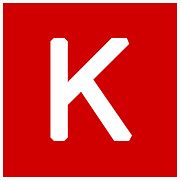Keras
 | |
| Original author(s) | François Chollet |
|---|---|
| Developer(s) | various |
| Initial release | 27 March 2015 |
| Stable release | 2.0.8
/ 24 August 2017 |
| Repository | |
| Written in | Python |
| Platform | Cross-platform |
| Type | Neural Networks |
| License | MIT |
| Website | keras |
Keras is an open source neural network library written in Python. It is capable of running on top of MXNet, Deeplearning4j, Tensorflow, CNTK or Theano.[1][2] Designed to enable fast experimentation with deep neural networks, it focuses on being minimal, modular and extensible. It was developed as part of the research effort of project ONEIROS (Open-ended Neuro-Electronic Intelligent Robot Operating System),[3] and its primary author and maintainer is François Chollet, a Google engineer.
In 2017, Google's TensorFlow team decided to support Keras in TensorFlow's core library. Chollet explained that Keras was conceived to be an interface rather than an end-to-end machine-learning framework. It presents a higher-level, more intuitive set of abstractions that make it easy to configure neural networks regardless of the backend scientific computing library.[4] Microsoft has been working to add a CNTK backend to Keras as well and the functionality is currently in beta release with CNTK v2.0 .[5][6]
Features
The library contains numerous implementations of commonly used neural network building blocks such as layers, objectives, activation functions, optimizers, and a host of tools to make working with image and text data easier. The code is hosted on GitHub, and community support forums include the GitHub issues page, a Gitter channel and a Slack channel.
Traction
As of 16 September 2016[update], Keras is the second-fastest growing deep learning framework after Google's TensorFlow, and the third largest after TensorFlow and Caffe.[7]
See also
References
- ^ "This Is What Makes Keras Different, According To Its Author". forbes.com. Retrieved 2016-09-20.
- ^ Deeplearning4j Keras Frontend
- ^ "Keras Documentation". keras.io. Retrieved 2016-09-18.
- ^ Chollet GitHub Comment
- ^ CNTK Keras GitHub Issue
- ^ alexeyo. "CNTK_2_0_Release_Notes". docs.microsoft.com. Retrieved 2017-06-14.
- ^ "François Chollet on Twitter". Retrieved 2016-09-18.
